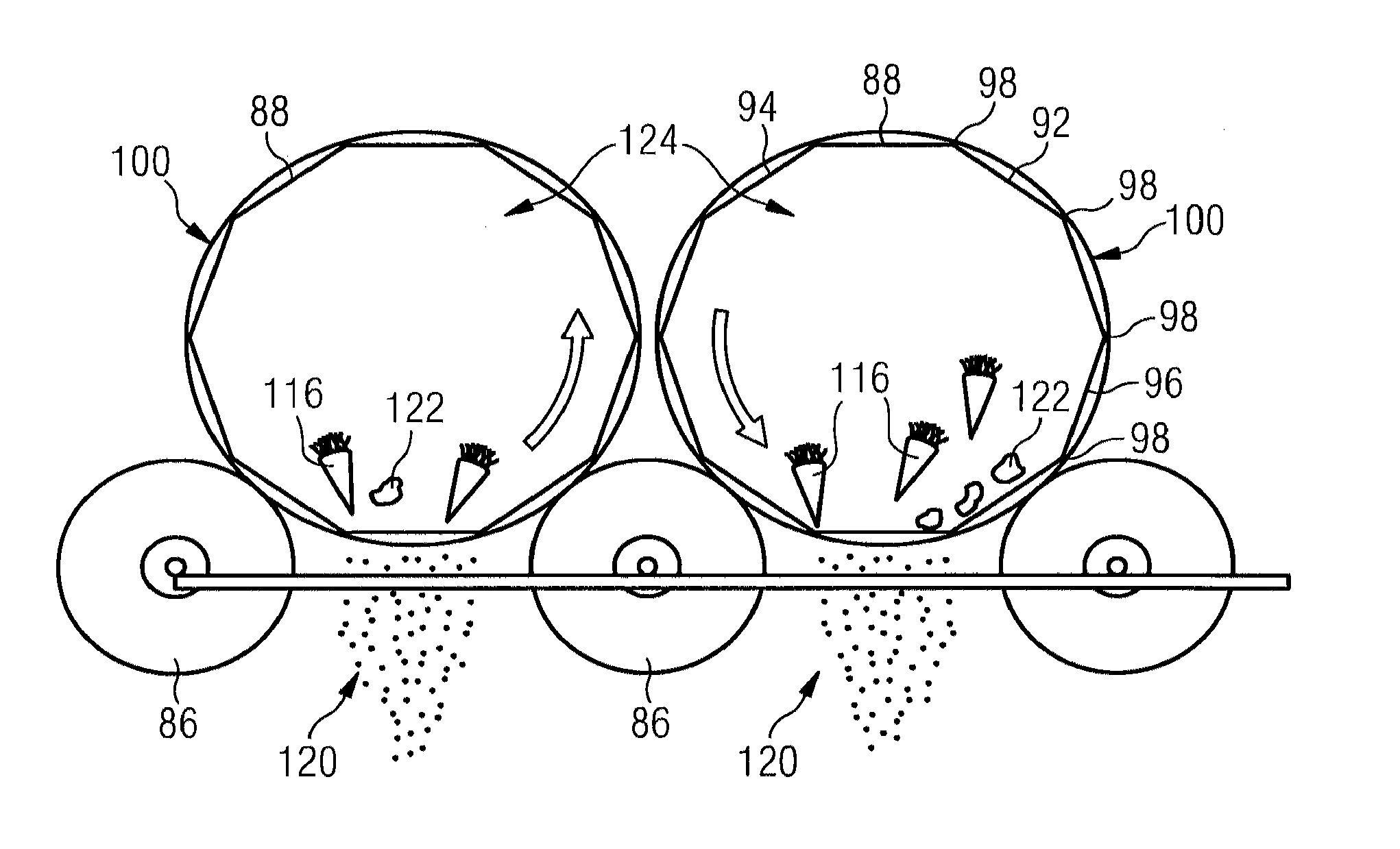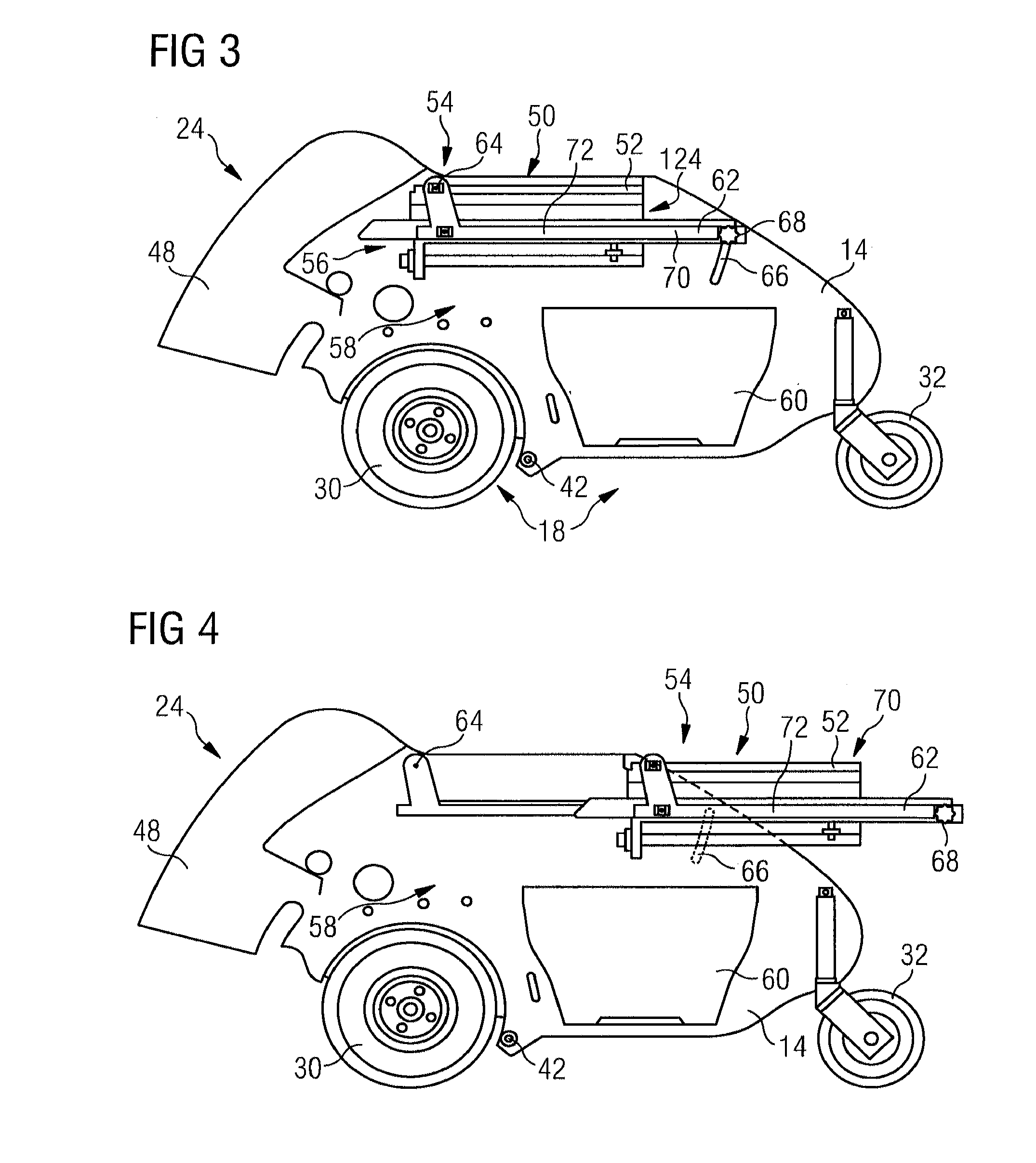Soil plug processing mechanism
a processing mechanism and plug technology, applied in the field of soil plug processing mechanism, can solve the problems of unfavorable use, high vibration, unfavorable use, etc., and achieve the effects of reducing vibration, simple removal, and smooth running
- Summary
- Abstract
- Description
- Claims
- Application Information
AI Technical Summary
Benefits of technology
Problems solved by technology
Method used
Image
Examples
Embodiment Construction
[0060]The ground maintenance machine 10 shown in more detail in FIG. 1 is realized as a cleaning machine 12 (in particular, e.g. a sweeping machine) for cleaning (e.g. by sweeping) areas of ground of pieces of soil or soil cores, referred to below as soil plugs, that occur during ground maintenance. The cleaning machine 12 has a chassis 14 (basic design or machine frame) with a framework 18 and a manual guiding device 20 in order to move the cleaning machine 12 over the ground. In addition, the cleaning machine 12 has a plug picking up device 22 for picking up soil plugs and a soil plug processing mechanism 24 for processing the soil plugs picked up. In the embodiment represented, the cleaning machine 12 is realized as a self-propelling machine which has an engine 28, in particular an internal combustion engine.
[0061]The framework 18 has drive wheels 30 and guide rollers 32. The drive wheels 30 are connectable to the engine 28 in a usual manner (not shown in any more detail) to driv...
PUM
 Login to View More
Login to View More Abstract
Description
Claims
Application Information
 Login to View More
Login to View More - R&D
- Intellectual Property
- Life Sciences
- Materials
- Tech Scout
- Unparalleled Data Quality
- Higher Quality Content
- 60% Fewer Hallucinations
Browse by: Latest US Patents, China's latest patents, Technical Efficacy Thesaurus, Application Domain, Technology Topic, Popular Technical Reports.
© 2025 PatSnap. All rights reserved.Legal|Privacy policy|Modern Slavery Act Transparency Statement|Sitemap|About US| Contact US: help@patsnap.com



